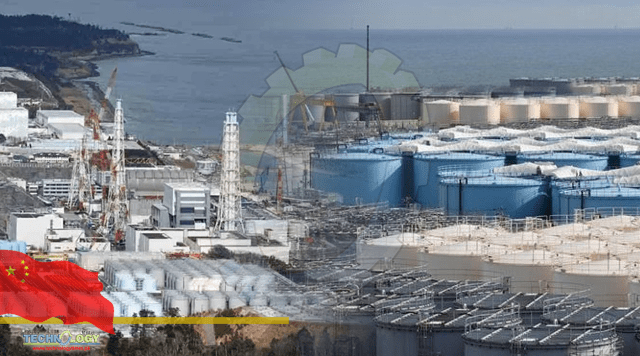Despite doubts and opposition from home and abroad, Japan has unilaterally decided to release the Fukushima nuclear wastewater into the sea before exhausting all safe ways of disposal and without fully consulting with neighboring countries and the international community.

China and South Korea expressed strong opposition Tuesday to Japan’s decision to start releasing “treated” radioactive water into the sea from its crippled Fukushima Daiichi nuclear power plant in two years.
Despite doubts and opposition from home and abroad, Japan has unilaterally decided to release the Fukushima nuclear wastewater into the sea before exhausting all safe ways of disposal and without fully consulting with neighboring countries and the international community.
This is highly irresponsible and will severely affect human health and the immediate interests of people in neighboring countries, China’s Foreign Ministry said in a statement.
Japan announced earlier in the day that it had decided to dispose of more than one million tons of contaminated water from the plant, more than a decade after a major accident at the facility.
Prime Minister Yoshihide Suga announced his government’s decision following a cabinet meeting and said that disposing of the treated water is an inevitable issue in the decommissioning of the Fukushima Daiichi plant.
The plan will be implemented by ensuring broad and firm steps to prevent damage, he stressed.
“How the wastewater from the Fukushima nuclear power plant is handled is not merely a domestic issue for Japan. We strongly urge the Japanese side to face up to its responsibility, follow the science, fulfill its international obligations and duly respond to the serious concerns of the international community, neighboring countries and its own people. It should reevaluate the issue and refrain from wantonly discharging the wastewater before reaching a consensus with all stakeholders,” the Chinese Foreign Ministry added.
South Korea also expressed “strong regret” over the move.
“The government expresses strong regret over the Japanese government’s decision to release contaminated water from the Fukushima nuclear plant into the ocean,” said Koo Yoon-Cheol, the head of South Korea’s Office for Government Policy Coordination, after an emergency meeting over the issue.
The South Korean government will take every necessary measure in line with the principle of keeping the South Korean people safe from the contaminated water from the Fukushima plant, the official added.
Third parties to be involved
Japan’s premier said the International Atomic Energy Agency (IAEA) and other third-party organizations will be involved in the process to observe that the plan of releasing water into the sea “is carried out with transparency.”
South Korea asked Tokyo to ensure the “transparent disclosure and verification of information related to the overall treatment process of the contaminated water.”
Suga said the release plan is also based on the IAEA’s scientific principles. The US has backed Japan’s move to discharge nuclear wastewater into the sea.
Ned Price, the US State Department spokesman, said: “In this unique and challenging situation, Japan has weighed the options and effects, has been transparent about its decision, and appears to have adopted an approach in accordance with globally accepted nuclear safety standards.”
Water containing tritium to be diluted
The radioactive materials formed in pure water, which functions as a coolant of the reactors, are decomposed except for the tritium material thanks to the Advanced Liquid Processing System.
According to the plan, the water containing the element tritium will be diluted at the level of 1,500 becquerels per liter. Thus, the plant’s operator, Tokyo Electric Power (TEPCO), will be able to discharge the water, which is increasing day by day, into the sea periodically.
TEPCO estimates that if the water stored in the plant is not released, the facility will fill its storage tank capacity by autumn 2022 at the latest.
The process of discharging the water into the sea is expected to take at least two years.
Originally published at Global village space